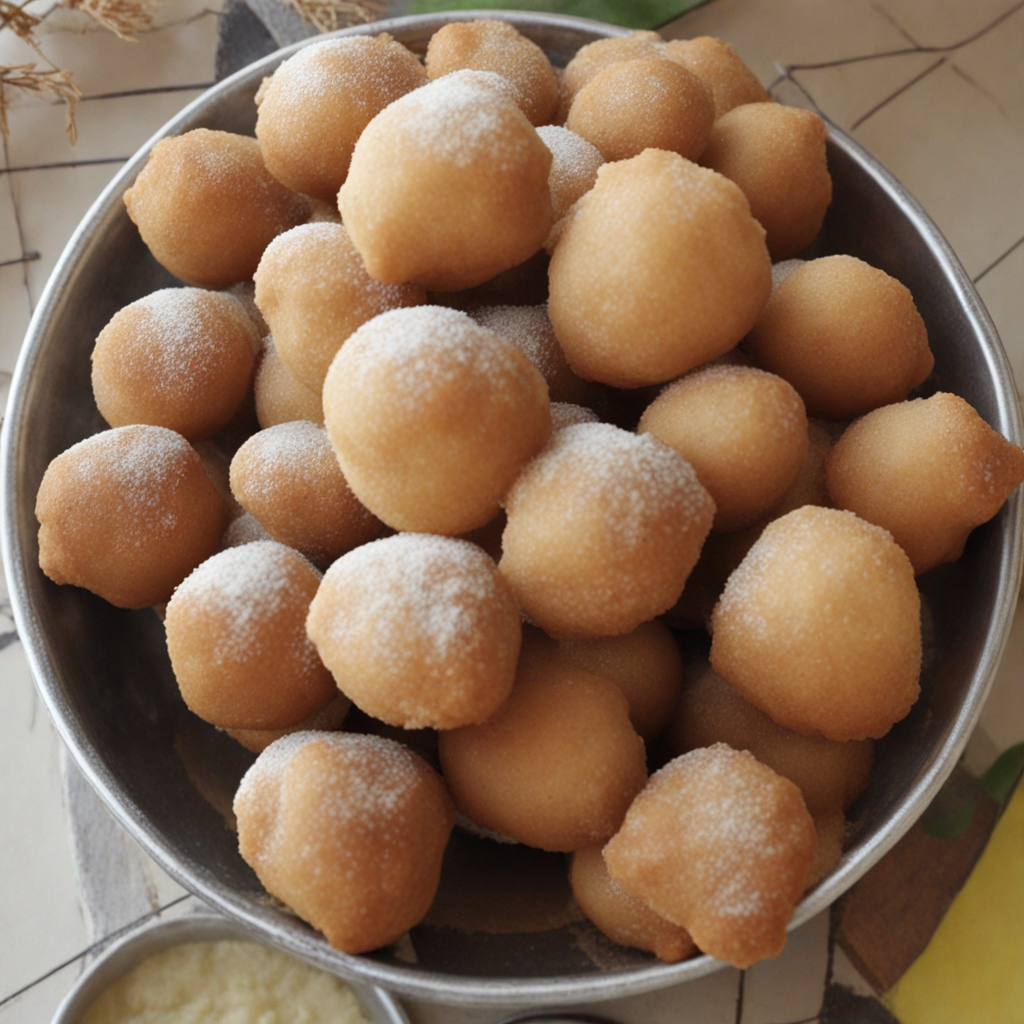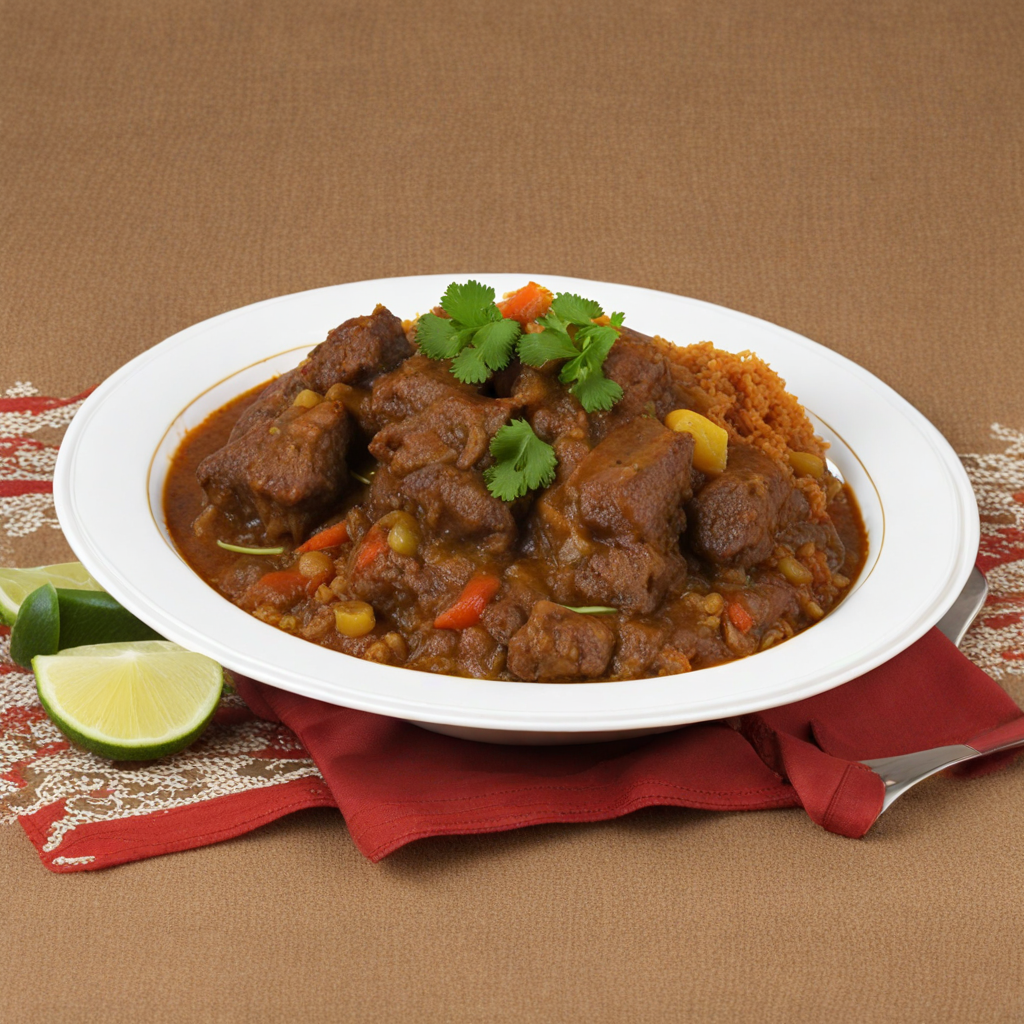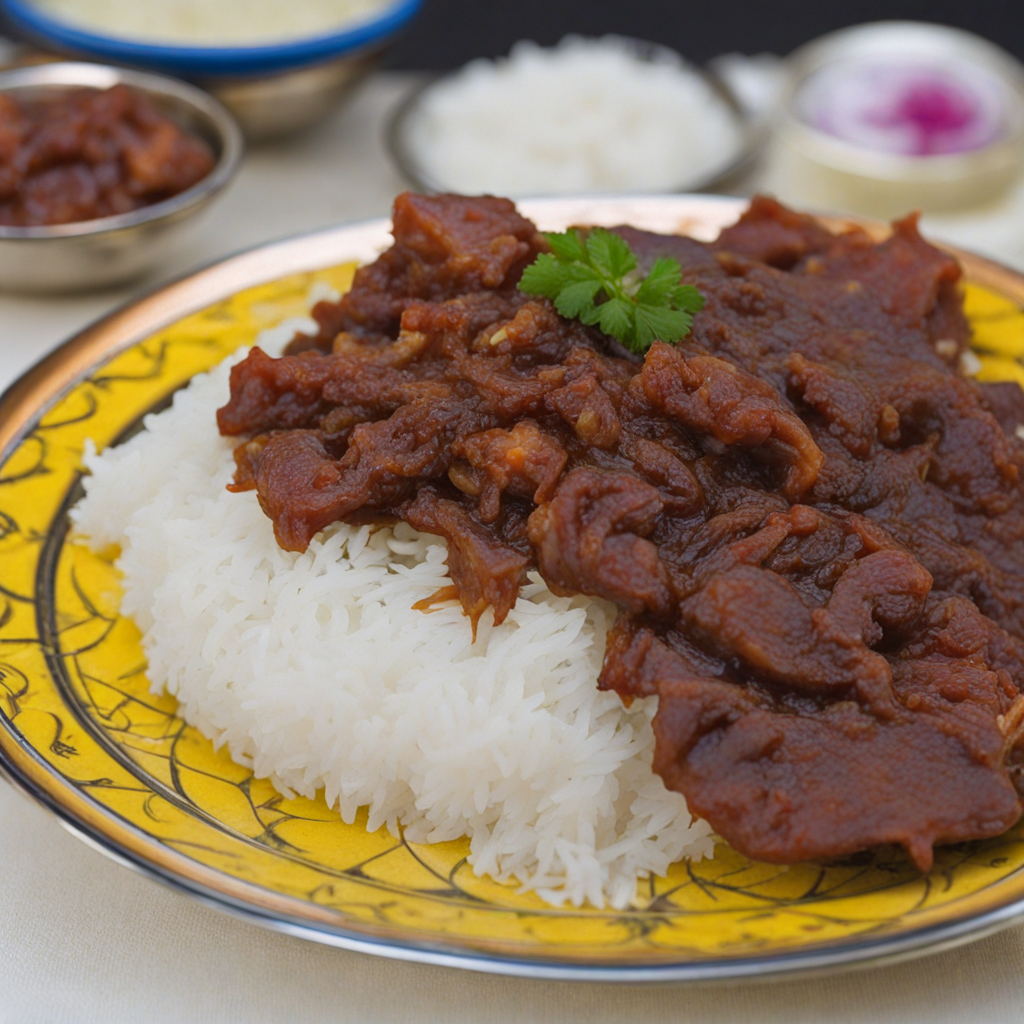Garowe
Garowe is a unique and flavorful dish hailing from Djibouti, characterized by its rich spices and aromatic ingredients. This traditional meal typically features tender pieces of meat, often lamb or goat, that are marinated and slow-cooked to perfection. The spices used in Garowe are a vibrant mix of cumin, coriander, and cardamom, which not only enhance the flavor but also reflect the diverse culinary heritage of the region. The dish is often accompanied by a side of rice or flatbread, allowing diners to savor every bite of the succulent meat and the well-balanced spices that permeate the dish. One of the standout components of Garowe is its use of fresh vegetables, which are usually incorporated into the cooking process. These vegetables, including tomatoes, onions, and green peppers, add a delightful freshness and texture that complements the hearty meat. The inclusion of herbs, such as cilantro and parsley, further elevates the dish, providing a burst of color and a refreshing contrast to the warm spices. The careful layering of flavors makes each serving of Garowe a sensory delight. The experience of enjoying Garowe is not just about the taste but also about the cultural significance it holds in Djibouti. Typically served during special occasions and family gatherings, this dish brings people together, symbolizing hospitality and community. Each bite tells a story of tradition, with recipes often passed down through generations. For those looking to explore new culinary landscapes, Garowe offers a perfect introduction to the rich and diverse flavors of Djibouti, inviting diners to savor the warmth and depth of its culinary roots.
How It Became This Dish
A Culinary Journey Through Djibouti: The Story of جاوي (Jarwi) Origins and Historical Context Jarwi, a beloved staple in Djibouti, is more than just a dish; it encapsulates the rich tapestry of the nation’s culinary heritage. The origins of jarwi can be traced back to the diverse influences of various cultures that have traversed the region, including Arab, Somali, Ethiopian, and French. Djibouti, strategically located at the Horn of Africa, has long been a crossroads for traders, explorers, and migrants, all of whom have left an indelible mark on the local cuisine. The fundamental components of jarwi consist primarily of rice and meat, often flavored with a variety of spices that reflect the region’s historical trade routes. The dish is essentially a type of pilaf, where the rice is cooked with meat—commonly goat, chicken, or beef—and an aromatic blend of spices such as cardamom, cloves, and cumin. This amalgamation of flavors showcases the intermingling of African, Arab, and Asian influences, making it a quintessential representation of Djibouti's culinary identity. Cultural Significance Jarwi occupies a central role in Djiboutian culture, particularly in social gatherings and celebrations. It is often prepared for special occasions such as weddings, religious holidays, and communal feasts. The communal aspect of dining in Djibouti cannot be overstated; meals are typically shared among family and friends, fostering a sense of togetherness and community. Serving jarwi during these gatherings not only highlights its status as a comfort food but also emphasizes cultural values of hospitality and generosity. In Djibouti, food is intertwined with identity. The preparation of jarwi can vary significantly from family to family, with each household adding its unique twist to the recipe. This personal touch can reflect familial traditions, regional variations, or even individual preferences. As such, jarwi serves as a canvas for storytelling, with each meal evoking memories of home, heritage, and the bonds that tie people together. Development Over Time The evolution of jarwi mirrors the broader socio-economic changes in Djibouti. During the colonial period, French influence began to permeate the local cuisine, introducing new ingredients and cooking techniques. The incorporation of French culinary practices brought about a fusion that can still be seen in modern Djibouti, where dishes like jarwi are often accompanied by a side of French bread or a salad influenced by Mediterranean flavors. In the post-colonial era, as Djibouti gained independence in 1977, there was a renewed interest in national identity and cultural heritage. This period saw a revival of traditional dishes, with jarwi emerging as a symbol of national pride. Food festivals and cultural events began to celebrate Djiboutian cuisine, promoting dishes like jarwi as a way to connect the younger generation with their roots. The emphasis on local ingredients, sustainable practices, and traditional cooking methods contributed to a renaissance of this beloved dish. Modern-Day Jarwi and Globalization In contemporary Djibouti, jarwi continues to thrive, albeit in an increasingly globalized context. The dish has adapted to modern palates, with variations that incorporate international influences. For instance, in urban centers, you may find jarwi served with a side of spicy chili sauce or accompanied by a salad reminiscent of Mediterranean cuisine. The globalization of food culture has led to the emergence of fusion dishes, with chefs experimenting with flavors and techniques, bringing together the essence of jarwi with global culinary trends. Moreover, the diaspora community plays a significant role in the evolution of jarwi. Djiboutians living abroad often recreate traditional dishes as a way to maintain connections to their homeland. In cities around the world, restaurants and food trucks featuring Djiboutian cuisine are popping up, introducing jarwi to new audiences. These adaptations not only showcase the versatility of the dish but also serve as a means of cultural exchange, allowing others to experience the flavors of Djibouti. Preservation of Tradition Despite the changes brought about by modernization and globalization, the spirit of jarwi remains intact. Many families still adhere to traditional recipes, passed down through generations, ensuring that the essence of this cherished dish endures. Culinary schools and cultural organizations are also working to promote Djiboutian cuisine, offering classes and workshops that focus on traditional cooking methods and regional ingredients. Furthermore, the rise of food documentaries and social media has provided a platform for showcasing Djiboutian cuisine, including jarwi. Chefs and home cooks alike share their recipes and cooking processes online, creating a vibrant community around the appreciation of Djiboutian food. This increased visibility helps preserve the cultural significance of jarwi while also inviting global interest in its unique flavors and history. Conclusion In conclusion, jarwi represents more than just a meal; it is a reflection of Djibouti’s rich history, cultural diversity, and evolving identity. From its origins rooted in ancient trade routes to its modern adaptations in a globalized world, jarwi continues to be a beloved dish that brings people together. Whether enjoyed at a family gathering, a wedding celebration, or a restaurant abroad, jarwi is a testament to the enduring power of food as a vehicle for cultural connection and storytelling. As Djibouti navigates the complexities of the modern world, jarwi stands as a delicious reminder of the past, a celebration of the present, and a hopeful promise for the future of its culinary heritage.
You may like
Discover local flavors from Djibouti







